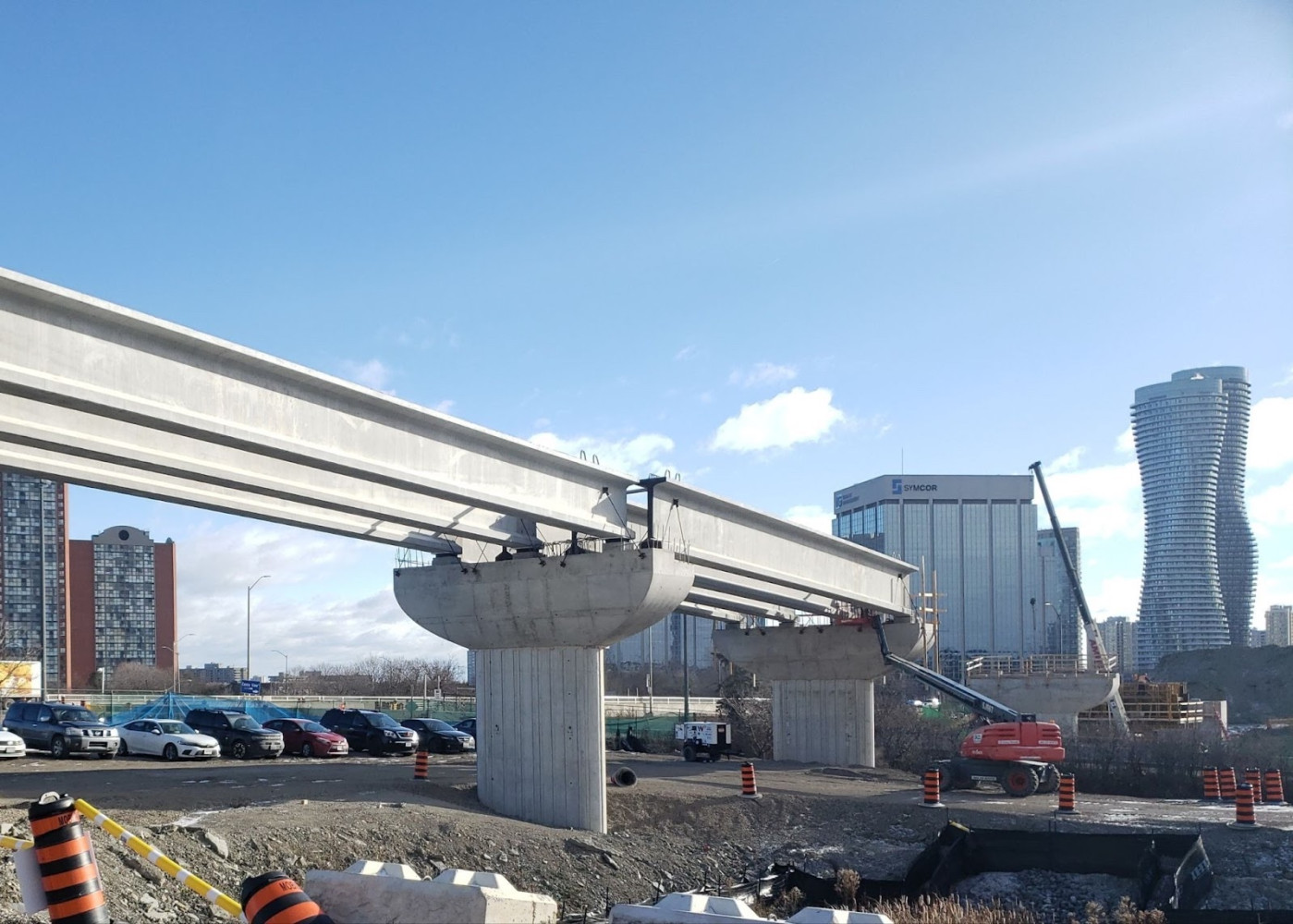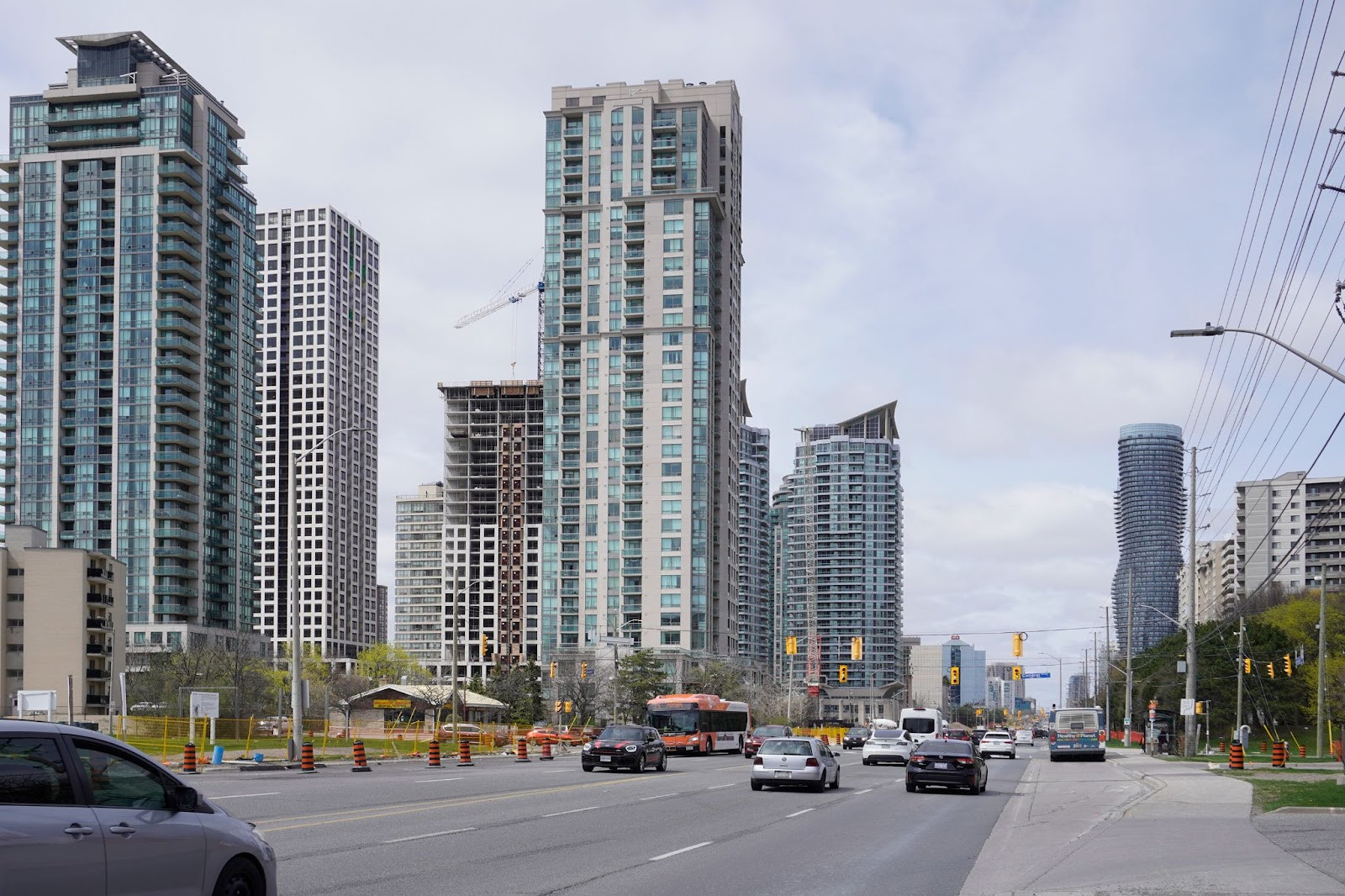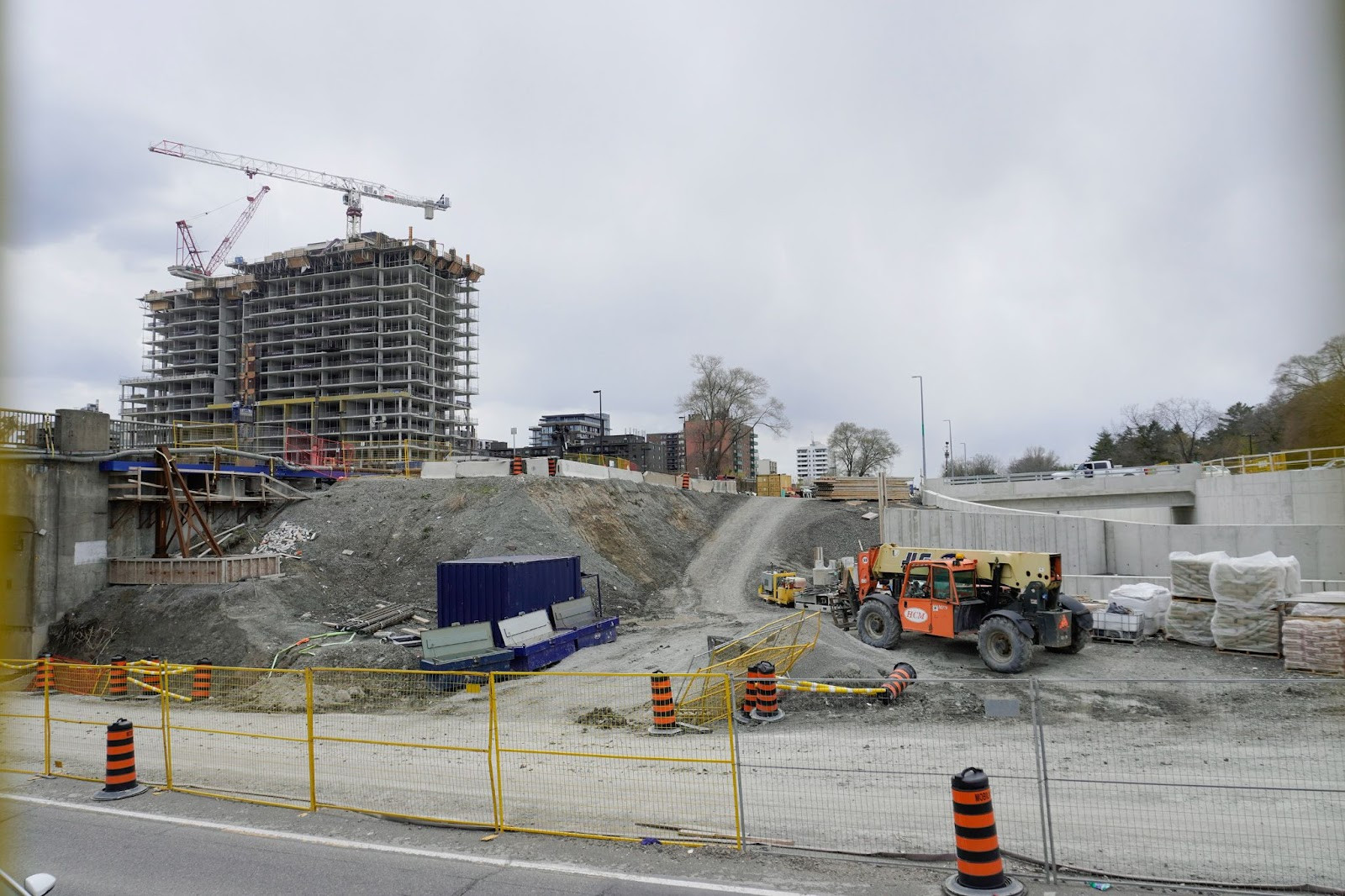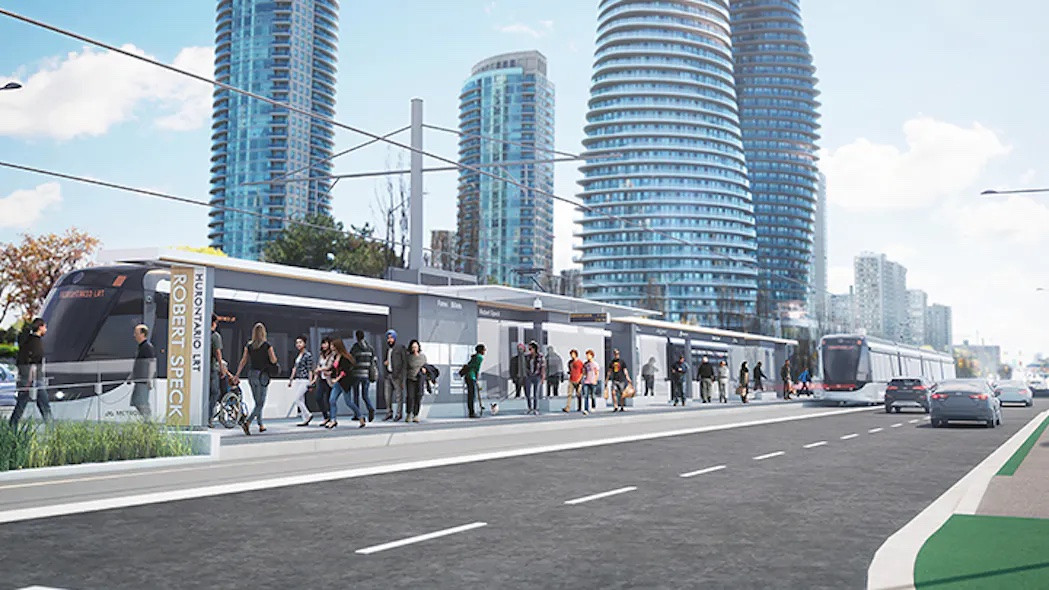
Hurontario LRT on track for 2024 completion despite delays; City waiting on PC commitment to restore downtown loop
City staff are highlighting the revised construction schedule of the Hurontario LRT which will see “substantial completion” in 2024, but the PC government has yet to provide funds for the downtown loop, which it removed, unexpectedly, from the project after first taking power.
According to a staff report presented to the City’s general committee on April 26, Metrolinx, the provincial agency spearheading the project, has given assurances the LRT construction will meet its revised target for completion in 2024 (it might not open till 2025), after the original plan for last year was abandoned due to the pandemic. Currently, 15 areas along the 18-kilometre route are undergoing construction. City staff are in the final stages of reviewing submitted design packages by the building consortium, Mobilinx, to ensure there are no conflicts with the existing infrastructure.
The $4.6 billion Hurontario LRT project will stretch from Port Credit in the south to Brampton’s Gateway terminal at Steeles Avenue in the north. Since construction began in Spring 2020 pandemic-related delays, supply chain issues and the logistical challenges of managing a historic construction project on one of Mississauga’s busiest roads have posed major challenges.
According to Geoff Wright, Commissioner of Transportation and Works, all deadlines in the agreement between the City and Metrolinx have so far been met following the shifting of the initial timeline from a completion date in 2022 to the revised timeline of 2024. The contract with Mobilinx is a public-private partnership that will see the Hurontario LRT, which will be named after Hazel McCallion, designed, constructed and run by the consortium of companies over 30 years, under the agreement, but still be publicly owned throughout.
Lin Rogers, manager of rapid transit, told the committee a majority of the Mississauga sections of the project are at 90 percent or 100 percent completion for the design phase, or have started construction.


Hurontario just south of Burnhamthorpe (top) and the LRT Port Credit Go Station entrance.
(Alexis Wright/The Pointer)
The report, which provided a summary of major activities and decisions that will need to be addressed, noted upcoming work this year will include ongoing corridor construction; delivery of a majority of the Traction Power Sub Stations (11 in Mississauga, used to generate consistent power for the LRT) and site completion at these stations; station construction at Port Credit GO and stop platform construction along the north end of the corridor; and commencement of the Environmental Assessment Addendum for the downtown loop that reviews the alignment within the city centre that was previously approved by the Province in 2014 before the PCs removed it when they took power, citing project cost inflation.
“The loop continues to be a top city building priority and City staff remain open to working with all levels of government to see this implemented,” Rogers said.
The route, which marks a major step toward Mississauga becoming a transit-oriented city, has been met with controversy since its introduction. Just before the $4.6 billion project was awarded to Mobilinx in March 2019, Metrolinx cut the downtown loop — approximately two kilometres of track around City Hall and the Square One Mall — in an attempt to shave costs, reducing transit connectivity and access to the city’s downtown core.
The removal of the loop saved, according to sources who spoke to The Pointer, at least $200 million. The surprise decision by the Doug Ford PC government was protested by members of Mississauga council leading up to the 2019 federal election when they used the campaign period as an opportunity to advocate for funding from higher levels of government. The PCs said the reduction of the overall track distance had to be done because cost estimates had increased significantly since the project was originally approved by the provincial Liberals in 2014.

A rendering of the Hurontario LRT just north of Burnhamthorpe Road.
(Metrolinx)
The downtown loop has been featured in all of Mississauga’s asks to upper levels of government ahead of budget season and elections, hoping for guaranteed funding to bring it back. The Hurontario LRT downtown loop was resurrected in early 2022 after Premier Doug Ford informally offered Mississauga a pre-election gift ahead of the June provincial vote — something Mayor Bonnie Crombie and the rest of Council has been championing since it was cut by Ford less than a year after he first took office.
When the Premier extended an olive branch last year he did not explain a timeline for when the loop’s funding would be restored, or updated costs. Over a year later, City Council is still in the dark.
“We haven't heard anything formally on the loop,” Joe Perrotta, director of rapid transit, explained to the committee Wednesday. “We do continue to advocate for it. We put forward the case that we feel it's important to our downtown and important to the overall service because it does allow us to ramp up service even further on the LRT line, but we haven't had any updates from the province on it.”
In an email to The Pointer, a spokesperson for the Ministry of Transportation said the government continues to be committed to the Hazel McCallion Line in Mississauga, but refrained from confirming the premier’s promise that the loop would be funded.
“The province is working with the City of Mississauga to deliver the project to better connect communities and spur economic growth,” the spokesperson said. “We will continue to consider all requests, including the Mississauga City Centre transit loop, as we have throughout the planning and procurement phases of the project.”
Crombie previously explained to The Pointer how important the loop is to making the LRT more accessible for residents and connected to the broader MiWay transit system. Since it would travel around the heart of Mississauga’s downtown, offices, businesses and housing are quickly taking shape around the route. The earlier design blueprint had three stops slated to go around Square One shopping centre and the City Hall precinct, to reduce car traffic in the area, which could transform the downtown into a walkable district and decrease transit wait times. Currently the LRT is one straight line from Port Credit to the southern part of Brampton, at 18-kilometres long.
“We continue to press forward on our advocacy to add the Downtown Loop back into the project,” Crombie explained in an email. “The Loop originally extended to Duke of York but with the significant growth happening in the downtown, especially over the next decade, there may be a case to be made to possibly extend it further west. I look forward to seeing the results of the EA and will continue to advocate to the province that Metrolinx be directed to sharpen their pencils and provide an updated costing of what it would be to add the Loop back into the scope of the project.”

The loop design plan features three stations around Square One, even though the Province has not formally committed to restoring the downtown loop.
(Metrolinx)
Since the project’s inception, the timeline for completion has seen several alterations. In 2019, as the Province (which is funding the system) announced Mobilinx, composed of almost a dozen companies, would construct the project, Infrastructure Ontario shifted the schedule for completion to 2024, two years later than the original 2022 launch date. Construction was finally able to start in March 2020, after negotiations between the Province and City.
Toronto’s over-budget Eglinton Crosstown LRT is another example of a high-order transit project plagued by delays, and with recent quality concerns the Province has recently said its completion date is uncertain. The Crosstown has been under construction for the last decade and includes 25 stations stretching across 19 kilometres of dense urban neighbourhoods. The building consortium for the project, the City and the Province have been involved in an escalating series of disagreements over the delays.
Mississauga is hoping its construction contractor does not get mired in similar problems.
After confirming that despite delays, the project is on track for a 2024 substantial completion, Rogers explained on Wednesday that with ongoing construction along the entire corridor all work zones within Mississauga are going to have active construction, from utility relocation to track installation.
“Throughout the construction period, all project partners continue to consider innovative construction techniques and opportunities to minimize impact to surrounding residents, businesses and road users,” the report notes. “As expected, the level and types of complaints has risen as construction advances. Complaints are typically related to noise, working hours, access and traffic impacts.”

The photo above shows progress along Hurontario Light Rail Transit Corridor which includes an elevated guideway that will cross over Highway 403.
(Mobilinx)
Rogers highlighted the construction of the landscape altering elevated LRT overpass that will cross over Highway 403, which commenced in the summer of 2022 and included girder placement along Hurontario and Rathburn Road. The guideway is a stand-alone elevated section of the light rail line that branches off from the mainline tracks over the 403 toward Mississauga’s city centre in the west and rejoins the main tracks south of the highway.
The construction of a permanent underpass — “push box” — the “first of its kind” Metrolinx says, has also started at the Port Credit GO Station, creating a tunnel and continuing underneath the Lakeshore West Rail Line to allow the future Hazel McCallion Line to enter and exit Port Credit GO Station without disrupting current train service on the tracks above.
The completion of the LRT will mark a significant step toward Mississauga’s goal of becoming a transit-oriented city. The vision includes two bus rapid transit systems on Lakeshore Road and Dundas Street that will run east-west and connect to the north-south LRT.
“The City will continue to provide its input in reviewing and completing the design process by Mobilinx, particularly impacting the City infrastructure. Being the municipal planning authority and regulator, the City will continue to work with mobilinx to process various permits, licenses and approvals to permit the construction activities,” the staff report explained.
If Mississauga wants to promote transit and provide an efficient alternative to single-vehicle options in a car-crazed city, the creation of rapid bus service and its first light rail system will have to offer fast commute times.
Email: [email protected]
Twitter: @mcpaigepeacock
At a time when vital public information is needed by everyone, The Pointer has taken down our paywall on all stories relating to the pandemic and those of public interest to ensure every resident of Brampton and Mississauga has access to the facts. For those who are able, we encourage you to consider a subscription. This will help us report on important public interest issues the community needs to know about now more than ever. You can register for a 30-day free trial HERE. Thereafter, The Pointer will charge $10 a month and you can cancel any time right on the website. Thank you
Submit a correction about this story


